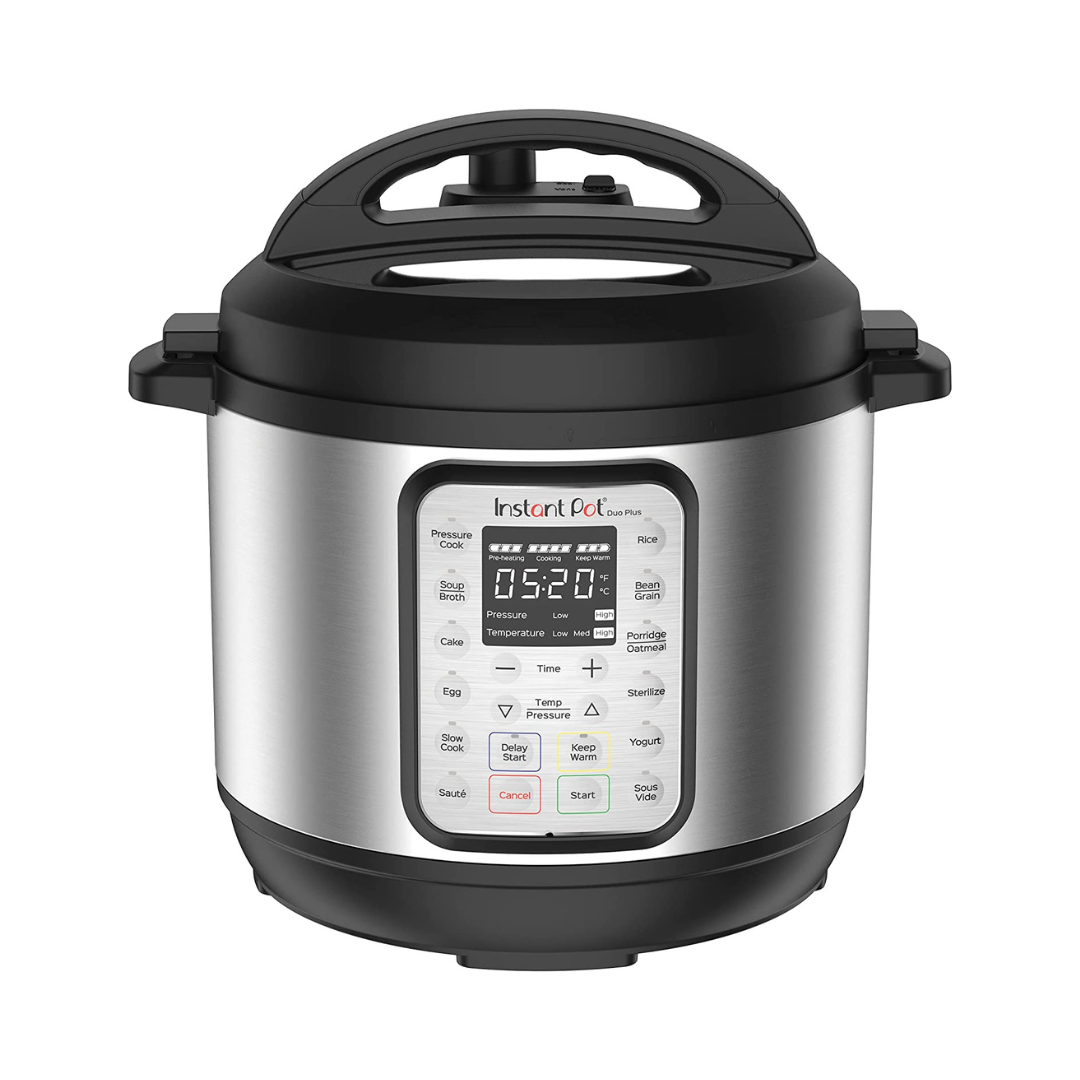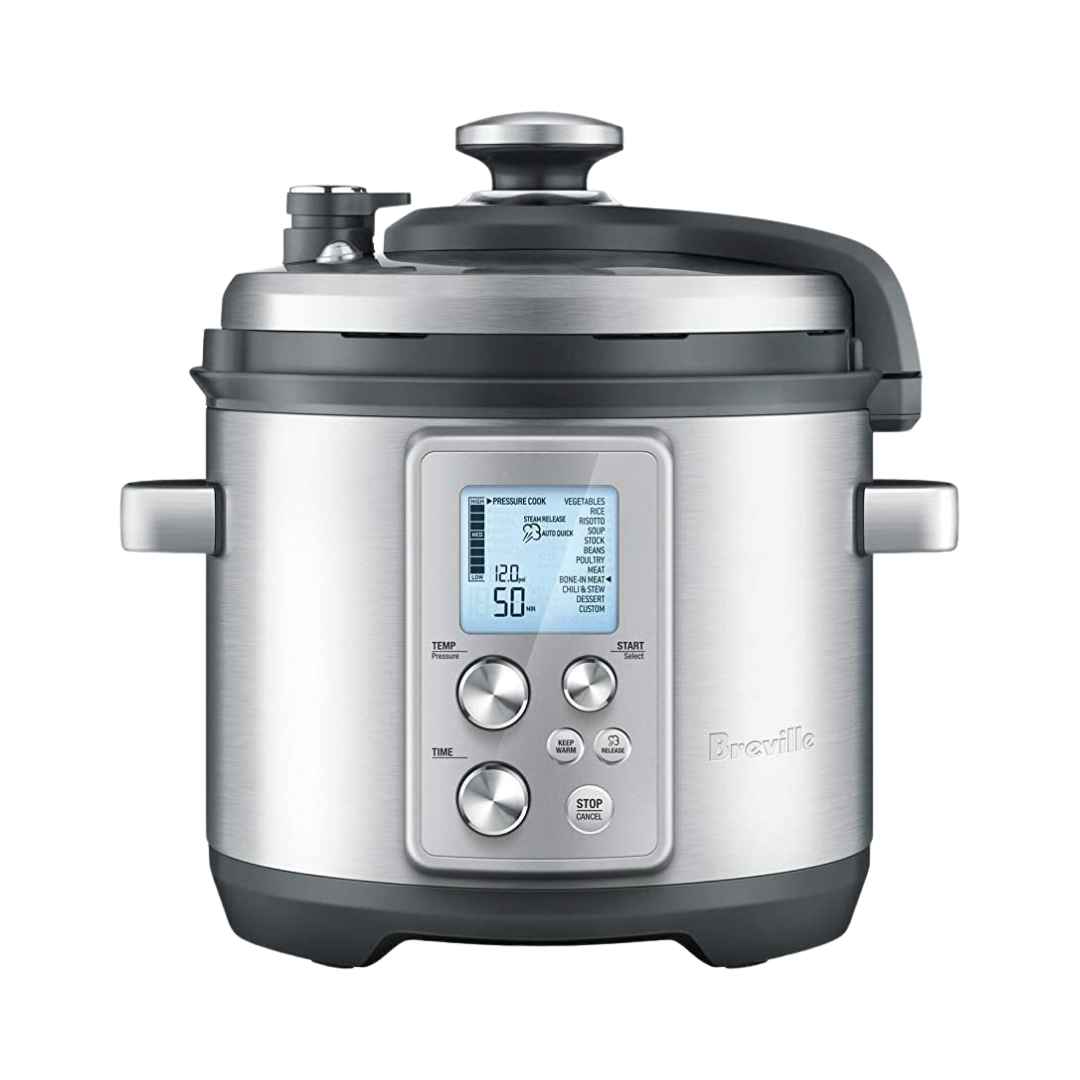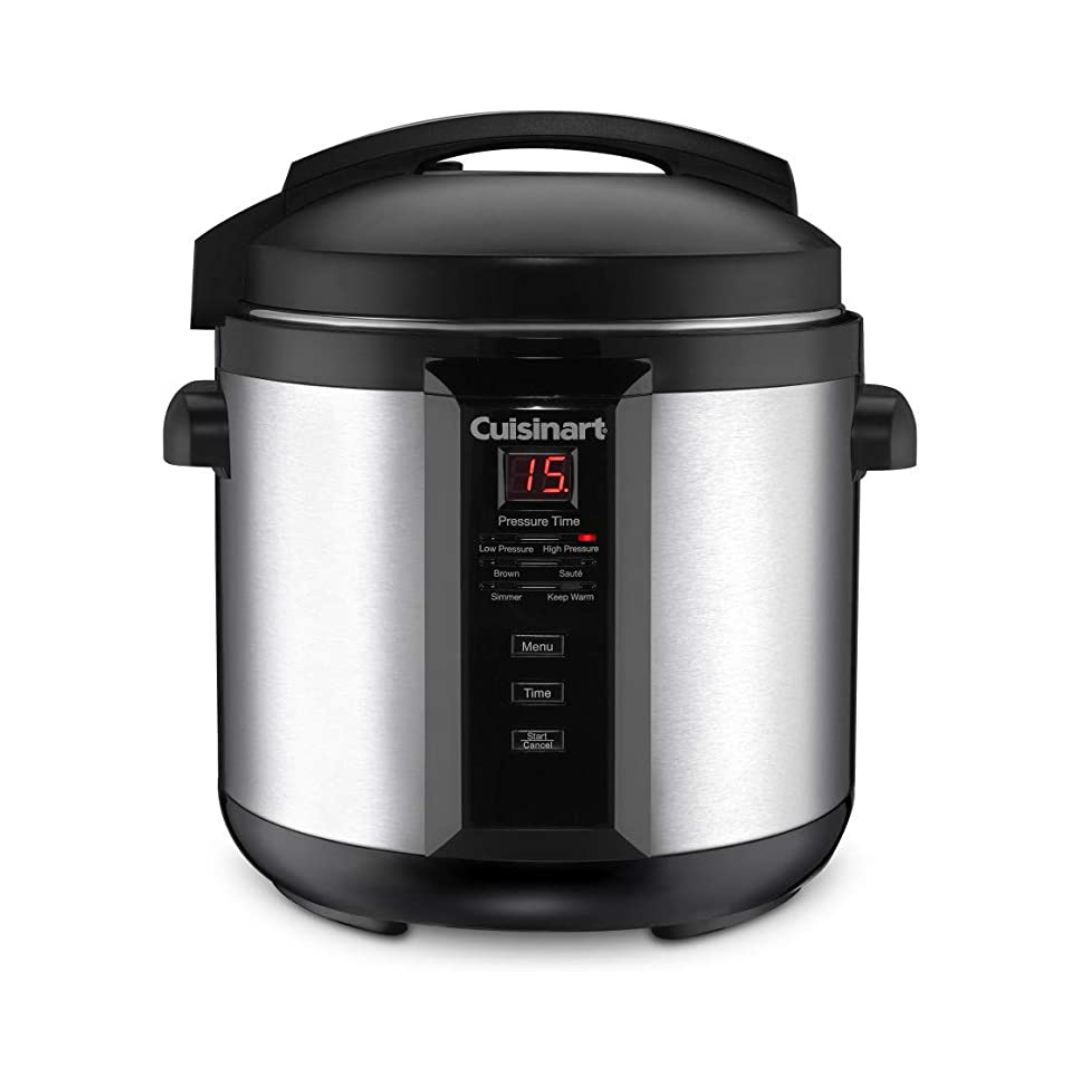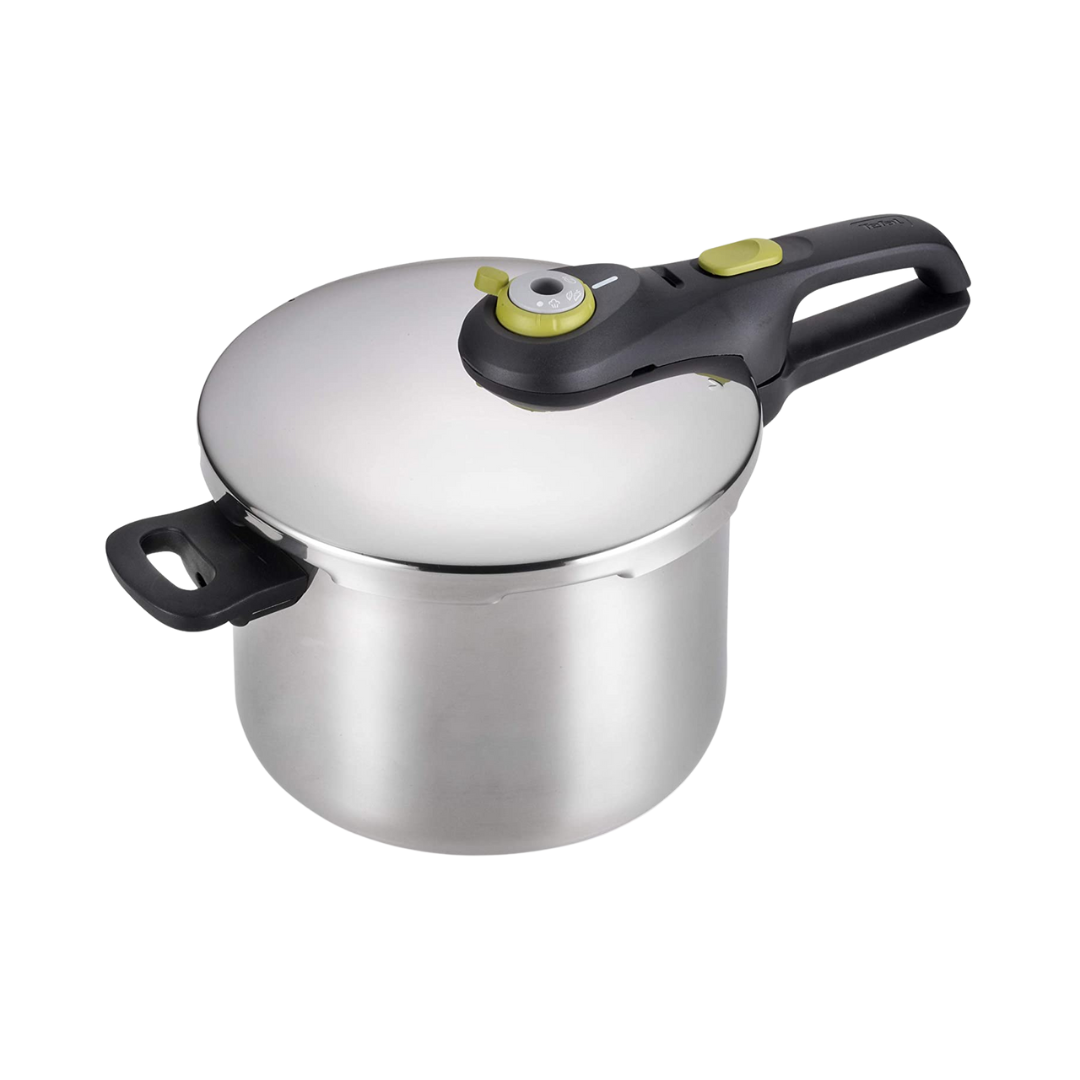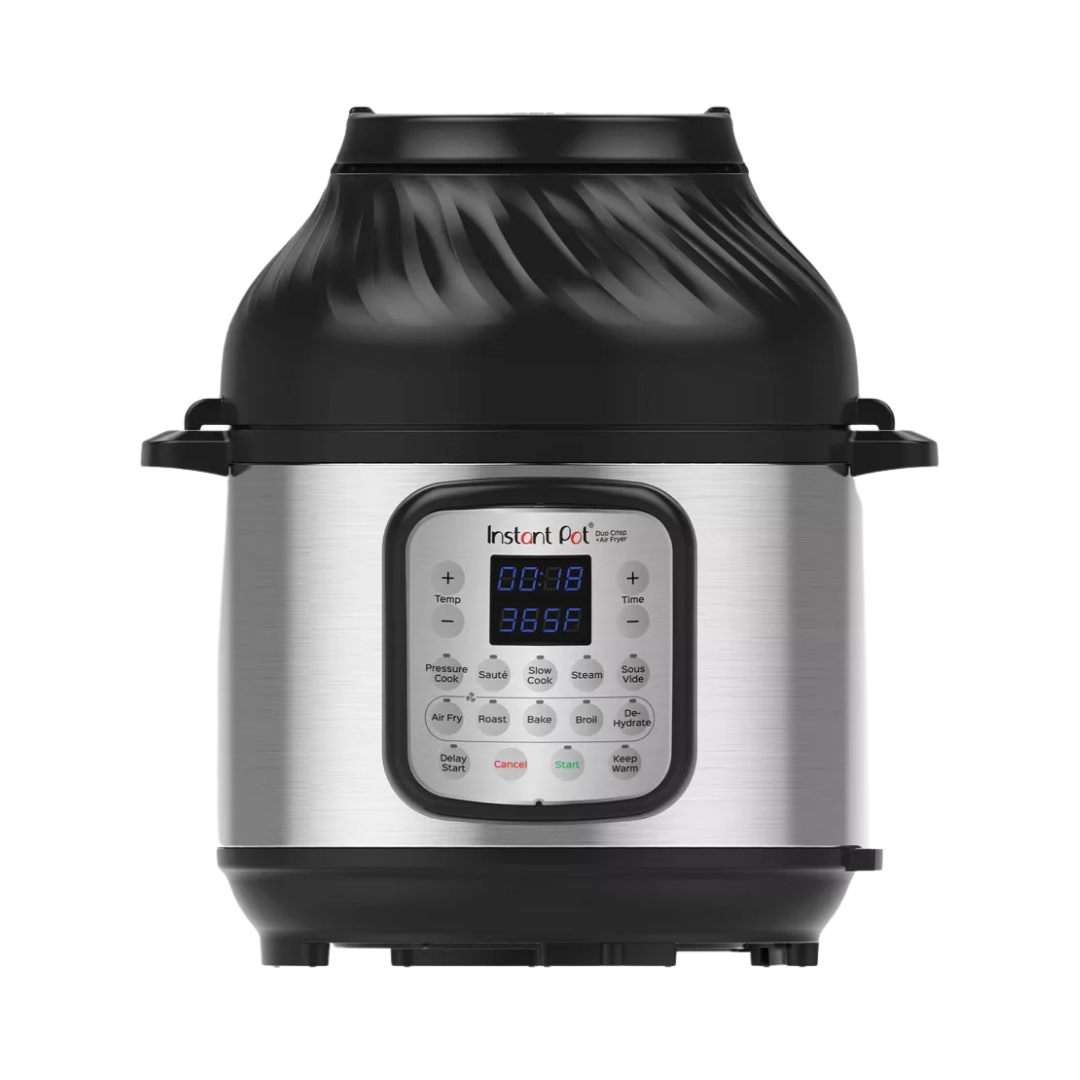We may be compensated if you purchase through links on our website. Our team is committed to delivering honest, objective, and independent reviews on home products and services.
A pressure cooker is a powerful kitchen appliance that provides home-cooked meals in a matter of minutes. Whether you’re looking for a high-tech design or a small, basic model, pressure cookers come in a number of sizes and styles to suit your cooking needs.
To help you select the one that’s right for your kitchen, the This Old House Team researched the best pressure cookers available online. Here are our top recommendations.
Top 5 Pressure Cookers
- Best For Small Meals: Instant Pot Duo Plus 9-in-1 Electric Pressure Cooker
- Best Display: Breville Slow Cooker
- Best Starter Cooker: Cuisinart Pressure Cooker
- Best Stovetop Cooker: T-fal Pressure Cooker
- Best For Large Meals: Instant Pot Duo Crisp Pressure Cooker
Best For Small Meals: Instant Pot Duo Plus 9-in-1 Electric Pressure Cooker
Key Features
- Materials: Stainless steel and plastic
- Capacity: Three quarts
- Features: 15 one-touch cooking programs
- Warranty: One year
What Customers Are Saying
Many users thought that this pressure cooker was the perfect size for a small household. They also said that the pressure cooker was reliable and performed many cooking functions. However, some users mentioned that it took too long to heat up.
Best Display: Breville Slow Cooker
Key Features
- Materials: Stainless steel and plastic
- Capacity: Six quarts
- Features: 11 cooking settings
- Warranty: One year
What Customers Are Saying
Customers appreciated this cooker’s various settings, detachable power cord, intuitive controls, and nonstick inner pot. Some customers complained that the pressure cooker retained the strange odor that it had when it arrived despite them cleaning the pot multiple times.
Best Starter Cooker: Cuisinart Pressure Cooker
Key Features
- Materials: Stainless steel and plastic
- Capacity: Six quarts
- Features: Three cooking settings
- Warranty: Three years
What Customers Are Saying
Feedback for this entry-level pressure cooker was primarily positive, with many customers stating that it was easy to clean, lightweight, and reliable. Its six-quart capacity was an ideal size for three-to-four-person households. However, a few customers thought the included instructions were confusing.
Best Stovetop Cooker: T-fal Pressure Cooker
Key Features
- Materials: Stainless steel and plastic
- Capacity: Six quarts
- Features: Two pressure settings
- Warranty: Two years
What Customers Are Saying
Customers who preferred cooking on a stovetop enjoyed using this manual pressure cooker, stating that it was easy to control. Its six-quart capacity was enough to feed medium-sized families. Some users said that it failed to achieve a high-pressure seal after a few months of use.
Best For Large Meals: Instant Pot Duo Crisp Pressure Cooker
Key Features
- Materials: Stainless steel and plastic
- Capacity: Eight quarts
- Features: 10 cooking settings
- Warranty: One year
What Customers Are Saying
Happy users appreciated the hassle-free cleanups and rapid cooking times of this pressure cooker. However, some unhappy customers found the pressure cooker awkward to store in their kitchen cabinets. There were also some complaints about the user experience of the manufacturer’s recipe app.
Buying Guide for Pressure Cookers
Each pressure cooker has specific features that impact its performance and user experience. Consider the below factors to determine which model works best for you.
Power Source
While electric pressure cookers are considered standard, stovetop pressure cookers are a viable alternative. Stovetop pressure cookers can reach and maintain higher pressures than their electric counterparts, cooking foods faster. Additionally, stovetop models are easier to maintain and store.
Although stovetop models are more affordable than electric pressure cookers, they require constant attention and don’t offer as many settings. Electric pressure cookers come with multiple functions that adjust the temperature, pressure, method, and time to match the food you’re cooking. Additionally, they have added safety features, such as automatic pressure releases and locking lids.
Capacity
A pressure cooker’s capacity is typically measured in quarts to determine the amount of food it can cook at once. In general, stovetop and electric models offer similar capacities, ranging anywhere from three to 10 quarts.
Settings
Most electric models come with multiple cooking settings that adjust the pot’s temperature and time to prepare foods in various ways. In addition to pressure cooking, some models transform into slow cookers, steamers, roasters, or broilers.
Material
Pressure cookers are commonly made of stainless steel, aluminum, or another metal. The inner pot usually has a nonstick coating, which makes for hassle-free cleanup.
Safety Features
Many electric pressure cookers come with safety features that prevent injuries or accidents. The most common safety features include hands-free steam release to prevent burns and automatic shut-off to keep the food from burning and the pot from overheating.
Important Pressure Cooker Safety Information
Though they offer a fast, easy, and healthy way to make meals at home, pressure cookers use hot steam and high pressure, which can be dangerous. In addition to taking note of the built-in safety features that come with your pressure cooker, keep the following tips in mind as you start cooking with it.
- Add the right amount of water. Too little or too much water could cause a pressure imbalance. While this may not result in injury to you or damage to your unit, a pressure imbalance is likely to burn your food.
- Don’t fill the pot more than half full with food. The food inside of your pressure cooker expands as it cooks. Opening the pot to overflowing food can lead to severe burns.
- Don’t fry food in your pressure cooker. The intense heat of the oil could damage the valve of the pressure cooker as well as other important and costly parts.
- Make sure the rubber gasket seal is intact. A broken or chipped gasket can prevent the appliance from creating a tight seal, causing it to open unexpectedly. We recommend keeping a spare gasket on hand—many pressure cookers come with one or multiple replacement gaskets.
- Take caution when you’re releasing the pressure and opening the lid. This is perhaps the most important safety tip. Make sure to carefully read the directions for your specific model on how to access your food once it’s cooked.
Frequently Asked Questions About Pressure Cookers
What’s the difference between a pressure cooker and a slow cooker?
The difference between a pressure cooker and a slow cooker lies in their cooking methods. Slow cookers and pressure cookers have similar designs, but a slow cooker uses low heat to cook food over many hours, while pressure cookers use high heat and pressure to cook food in less time.
Can I put frozen meat in a pressure cooker?
You can put thin cuts of frozen meat in your pressure cooker. If you want to cook a large slab of meat, thaw it beforehand.
What are some of the disadvantages of using a pressure cooker?
While pressure cooking is a convenient way to prepare food, this cooking method does have some disadvantages. Because you can’t lift an electric pressure cooker’s lid to check your food as it cooks, you can’t adjust the flavoring or check its doneness.
Does living at a high elevation affect the cooking times for my pressure cooker?
Yes, living at a high elevation affects the cooking time for your pressure cooker. If you live at an elevation of around 5,000 feet, add 10%–15% more cooking time. Extreme elevations above 10,000 feet may require even more cooking time.
Why Trust The This Old House Team
This Old House has empowered homeowners for more than four decades with top-notch home improvement content in the form of television programs, print media, and digital content on its website and social media platforms. The This Old House Team focuses on creating in-depth product and service review content to help inform your purchasing decision for just about any item or resource that you might need for your home. The This Old House Team has written over 1,000 reviews on products in the home space, from cordless drills to kitchen trash cans, lawn mowers, and dining room decorations.
We recommend products in each review using an intensive research process, spending hours combing through the best available models on Amazon. For a product to make our list of top picks, it must hold a solid sales record on Amazon, have consistently positive customer reviews, and offer unique features, among other factors. After narrowing down our list of recommendations, we conduct additional research and sometimes in-person testing to ensure that the products meet our standards. Once we conclude the research phase, we craft a well-rounded, user-friendly article that includes our recommended products and additional information to help homeowners like you make the right purchase.
To share feedback or ask a question about this article, send a note to our team at reviews@thisoldhousereviews.com.
